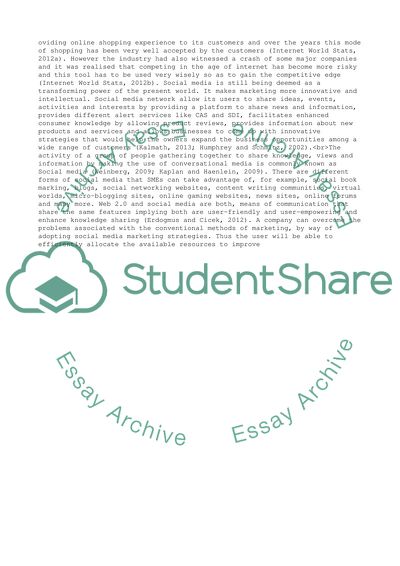Cite this document
(“A CRITICAL REVIEW OF THE USE OF FACEBOOK AS A SOCIAL MEDIA TECHNIQUE Literature”, n.d.)
A CRITICAL REVIEW OF THE USE OF FACEBOOK AS A SOCIAL MEDIA TECHNIQUE Literature. Retrieved from https://studentshare.org/management/1653602-a-critical-review-of-the-use-of-facebook-as-a-social-media-technique-to-promote-small-and-medium-scale-business-online
A CRITICAL REVIEW OF THE USE OF FACEBOOK AS A SOCIAL MEDIA TECHNIQUE Literature. Retrieved from https://studentshare.org/management/1653602-a-critical-review-of-the-use-of-facebook-as-a-social-media-technique-to-promote-small-and-medium-scale-business-online
(A CRITICAL REVIEW OF THE USE OF FACEBOOK AS A SOCIAL MEDIA TECHNIQUE Literature)
A CRITICAL REVIEW OF THE USE OF FACEBOOK AS A SOCIAL MEDIA TECHNIQUE Literature. https://studentshare.org/management/1653602-a-critical-review-of-the-use-of-facebook-as-a-social-media-technique-to-promote-small-and-medium-scale-business-online.
A CRITICAL REVIEW OF THE USE OF FACEBOOK AS A SOCIAL MEDIA TECHNIQUE Literature. https://studentshare.org/management/1653602-a-critical-review-of-the-use-of-facebook-as-a-social-media-technique-to-promote-small-and-medium-scale-business-online.
“A CRITICAL REVIEW OF THE USE OF FACEBOOK AS A SOCIAL MEDIA TECHNIQUE Literature”, n.d. https://studentshare.org/management/1653602-a-critical-review-of-the-use-of-facebook-as-a-social-media-technique-to-promote-small-and-medium-scale-business-online.


